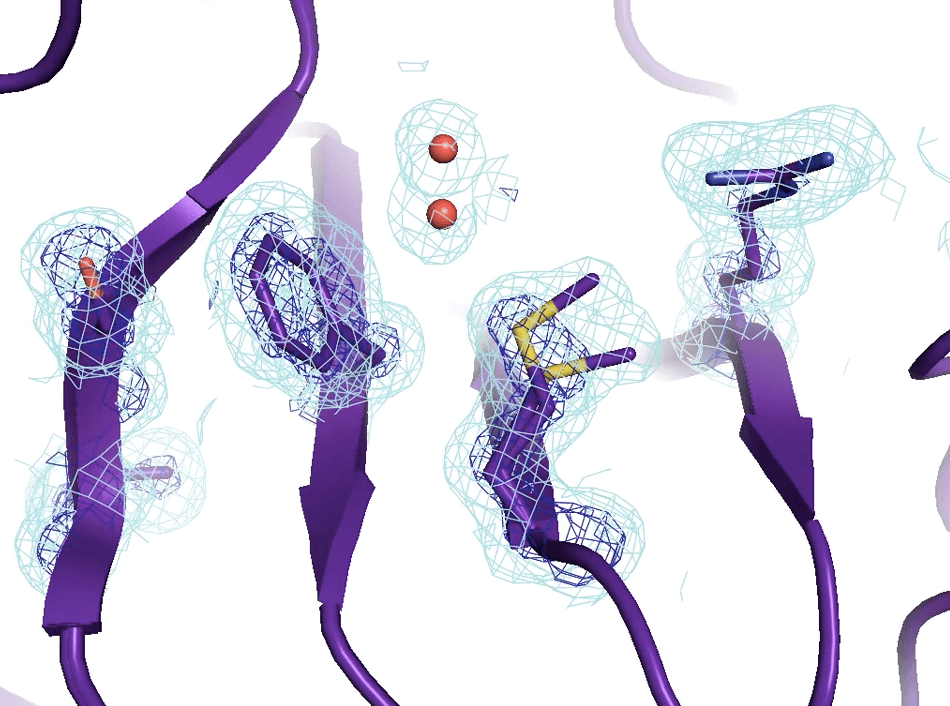
X-ray crystallography is a powerful method to derive protein structural information. Pure proteins can be coaxed into forming beautiful crystals. The periodic arrangement of molecules in the crystal is key to the ability of X-rays to diffract at specific angles. The pattern of these diffracted X-rays can then be mathematically transformed into electron density, which provides a map of the structure of the protein. After building an atomic structure into this map, the protein structure can then be analyzed.
QBI scientists use the intense X-rays available at UCSF/UCB beam line 8.3.1. at the Advanced Light Source at Lawrence Berkeley National Lab to visualize the architecture of macromolecular machines, to determine how mutations alter protein structure, and to improve the fit of small molecule drugs. Notable successes at our beamline include the detailed structure of many membrane proteins, key structures that have led to FDA approved kinase inhibitors, and de novo designed proteins.